The Waorani tribe in Ecuador survives by hunting and fishing. The jungle law is simple: catch it, eat it. I’ve visited several indigenous settlements, and in this article, I’ll tell you all about the Waorani Indians’ cuisine.
Содержание
What Do Waorani Eat?
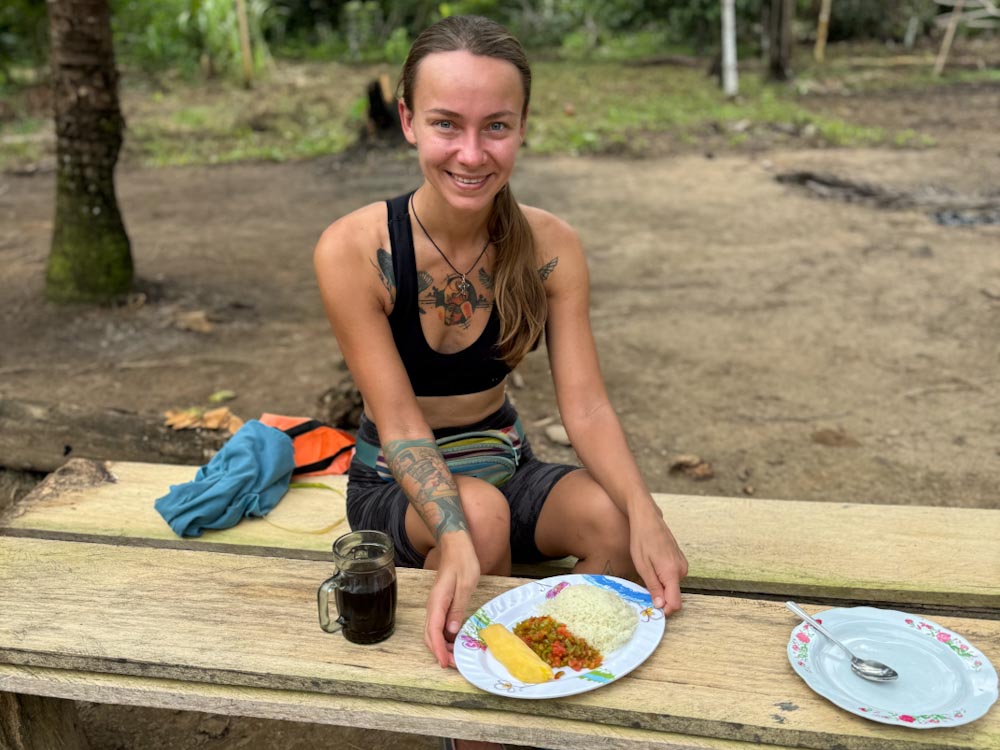
🐗 Hunting is the main activity for the Waorani Indians. Their favorite prey includes peccaries, spider monkeys, agoutis, sometimes caimans, deer, and certain birds.
There are animals the Waorani don’t eat. For instance, they avoid jaguars because they consider themselves jaguar people, and the shaman embodies this animal in their astral journeys. They also avoid anacondas and pythons because they upset their stomachs. The hoatzin bird is especially lucky—it’s so stinky no one eats it.

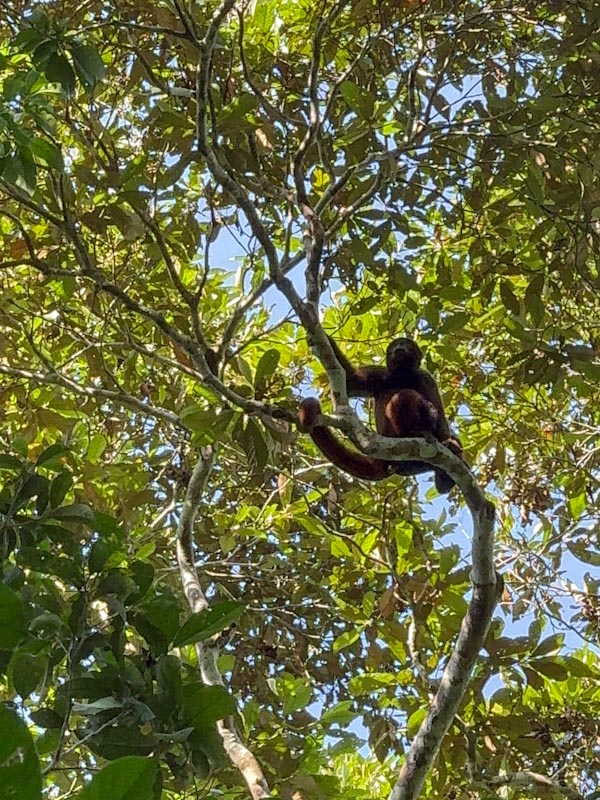
Read also: Hunting monkeys with a blowgun in the Amazon
🐣 Waorani don’t keep domestic animals except for chickens and geese, and even those are rare. If a hunter kills a mother and the offspring survive, they might be taken to the village as pets or raised and released into the wild.
🥦 Vegetables aren’t crucial in the their diet. They mainly eat cassava (yuca), a starchy root similar to dry potatoes. They eat it boiled or make chicha, a fermented drink, from it. Modern Waorani also consume purchased rice, occasionally potatoes, and plantains.
They don’t practice agriculture, but in modern settlements, you might find cassava brought closer to homes from the jungle, medicinal herbs, and sometimes, chili pepper bushes.
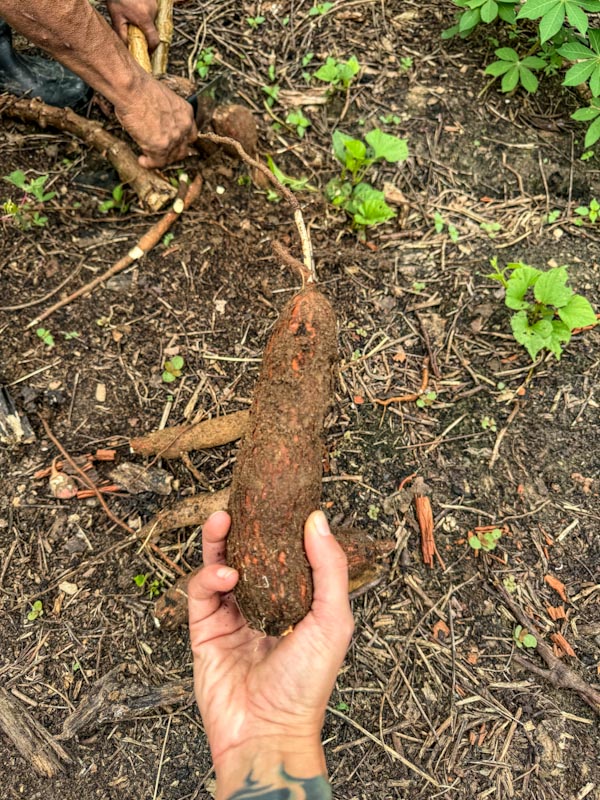
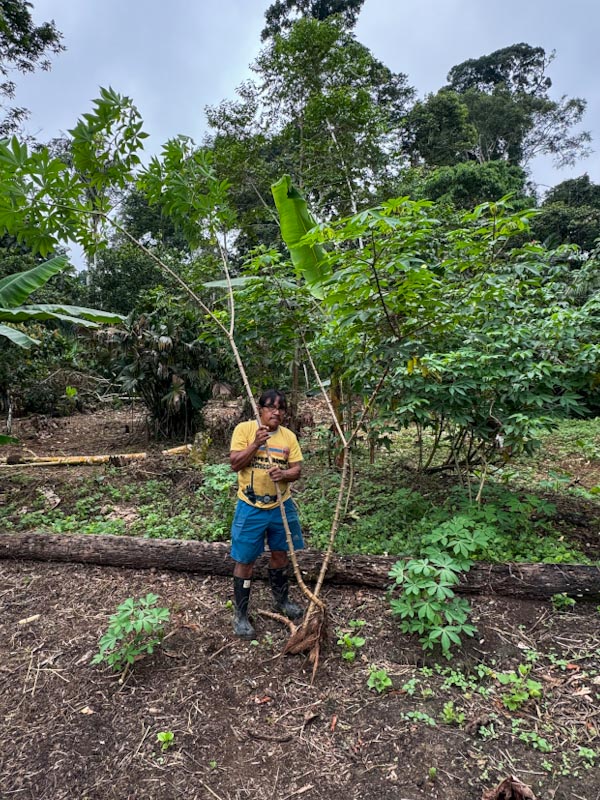
🍌 The Waorani’s forest homes boast around 80 fruit varieties, constituting a significant part of their diet and providing necessary vitamins. They eat papayas, passion fruit, cocoa, guavas, bananas and more.
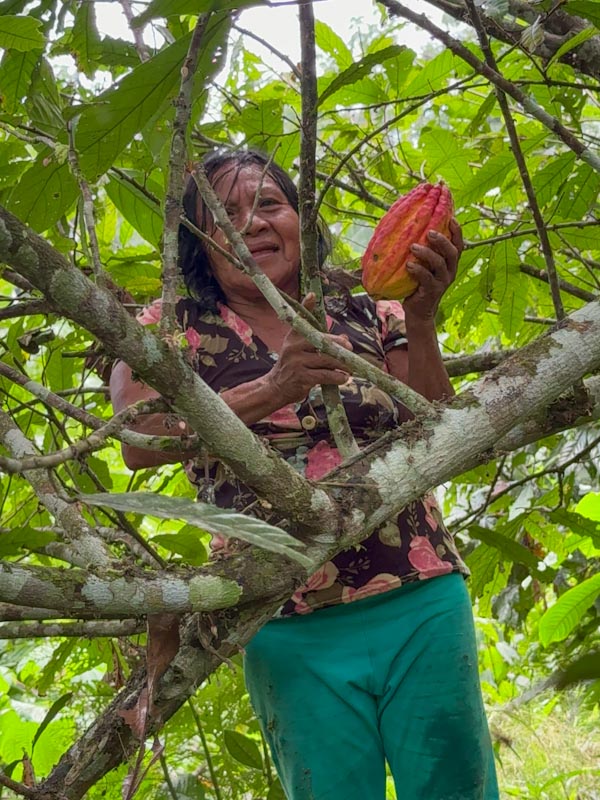
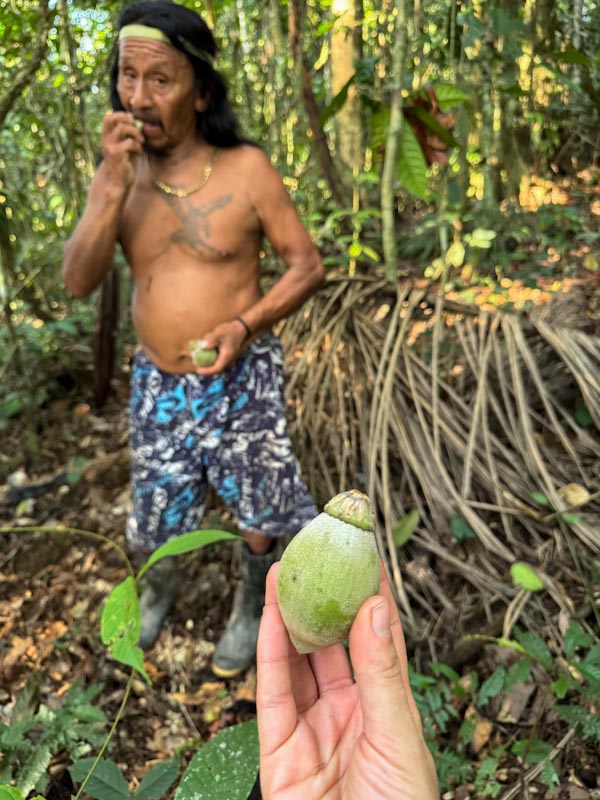
In the last decade, Waorani have been selling cocoa beans in the market. Cocoa trees grow in Ecuadorian rainforests without deliberate cultivation. Families suck the fruit seeds as they’re sweet and delicious, then dry them in the sun and take them to town.
They can earn $20-30 for this pile of cocoa.
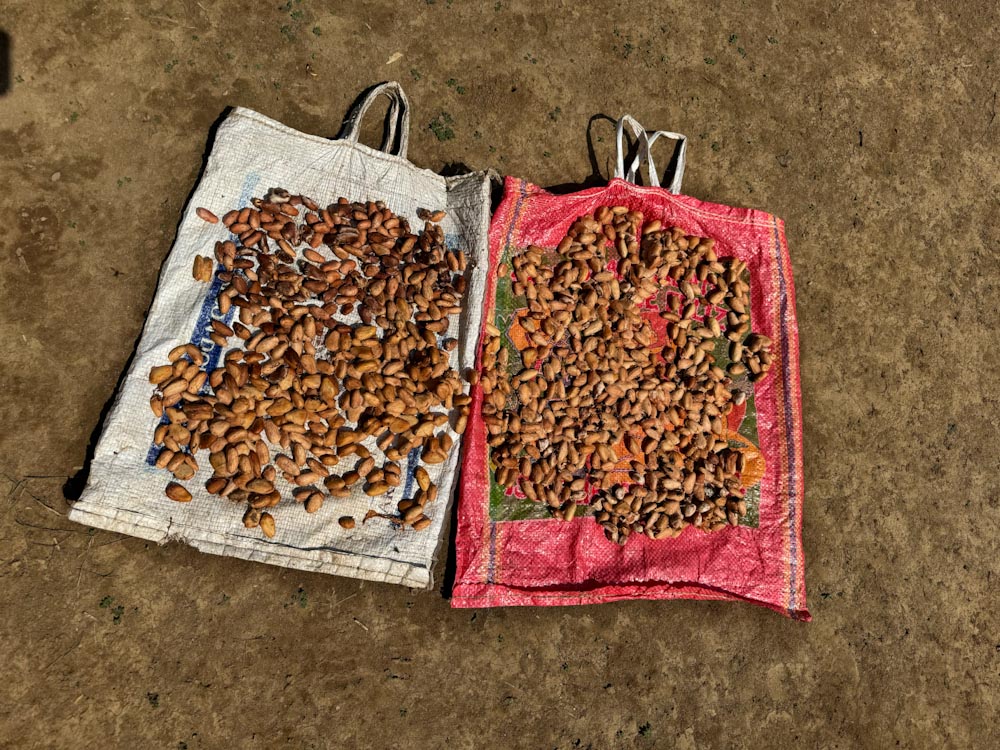
🐟 Fishing became popular after contact with civilization. Previously, Waorani didn’t have fishing rods, so they used baskets in shallow waters, stunning fish with barbasco poison. However, the catch was usually small, only suitable for soup. Nowadays, they catch catfish and piranhas.
🧂 Waorani cuisine lacks spices. While they buy salt and sugar from the city, they use them sparingly. The only traditional seasoning is wild garlic and onion leaves.
🍻 They rarely consume alcohol. Chicha is very weak, maybe 1-2% alcohol, and is often poured out. The neighboring Kichwa tribe lets chicha ferment longer. They seldom buy drinks from stores. Once we had beer, but we shared it among the entire tribe, so there wasn’t much. They don’t buy strong liquor, but if they have it, they’ll drink it all. Unfortunately, many indigenous people are vulnerable to alcoholism when they move to the city, but that’s not common among the Waorani.
👉 To book 🏕️ Huaorani Camping on Facebook (in Spanish).
👉 Interested in visiting the Waorani? Leave a comment, and I’ll send you information about the tours in English, Spanish and Russian.
👉 Fluent in Spanish? I recommend Kiwingi Tours, guided by Martin Baihua, the son of the renowned Waorani shaman Kemperi. He was born and raised in Bameno.
Breakfast with the Waorani Tribe
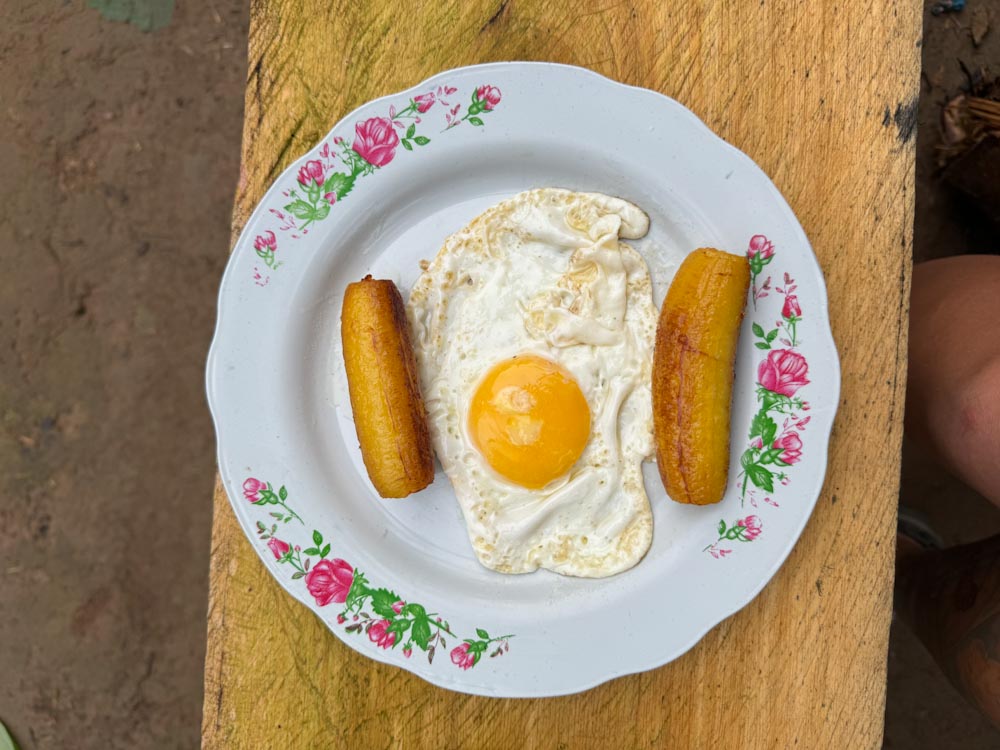
Traditionally, Waorani men leave for hunting around 3-4 a.m. Women prepare chicha and guayusa tea, which contains caffeine. In the forest, they snack on fruits.
Nowadays, breakfast might include a plate of fruits with dry oatmeal that swells in juice. Sometimes, they serve rice with egg, or fried sweet plantains, but these aren’t traditional. Instead of coffee, they offer very liquid oatmeal or chicha.
Waorani Lunch and Dinner
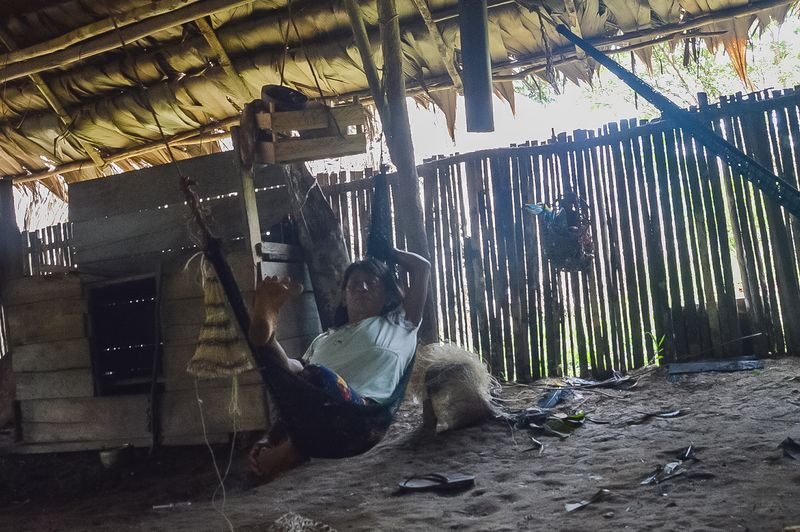
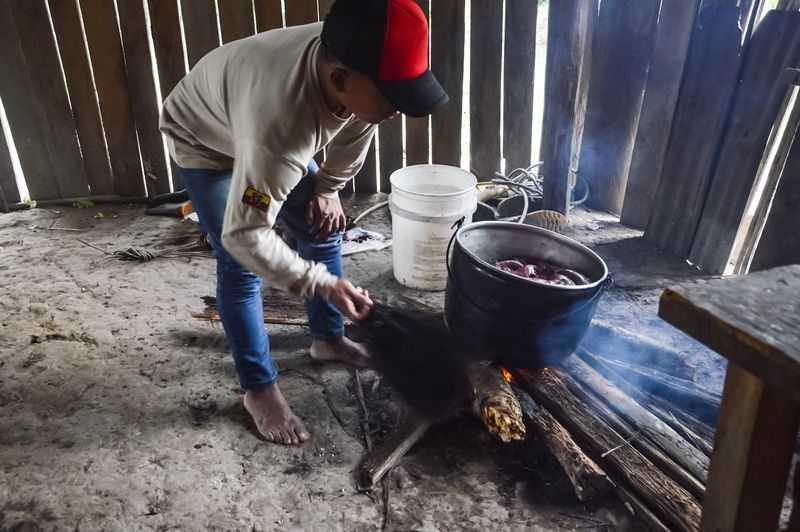
The kitchen is a spacious hut with an earthen floor, a couple of hammocks along the walls, and a large hearth for cooking. There are no tables here, just the simple comfort of the hammocks. They eat with hand, and some use utensils.
Lunch is usually skipped. Men venture into the jungle, while women tend to their chores, their hands busy with the tasks of daily life. It’s too hot to eat, so they might sip on fish soup or snack on ripe fruits plucked from the surrounding trees. However, I was served lunch. Chicken with rice and fried eggs is a typical dish in modern Waorani families, especially those closer to the city. We ate a lot, and there was always enough food.
The main meal is when hunters return with their catch. In the glow of the firelight, they gather, their voices rising in song and laughter. Here, in the heart of the jungle, food is more than sustenance; it’s a bond that unites them. Elders are served first, then women and children. And as they share their meal, no one goes hungry, there is always enough for all.
Traditional Waorani Dishes
Waorani cuisine doesn’t have any fancy traditional recipes. They keep it simple. Whatever they catch, they fry it up or boil it. For sides, it’s usually boiled cassava or rice. And for dessert they just grab some fruits.
Turtle soup and meat
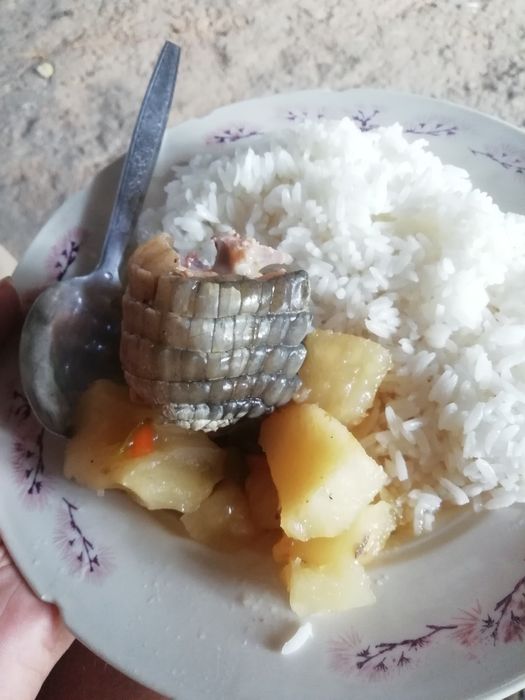
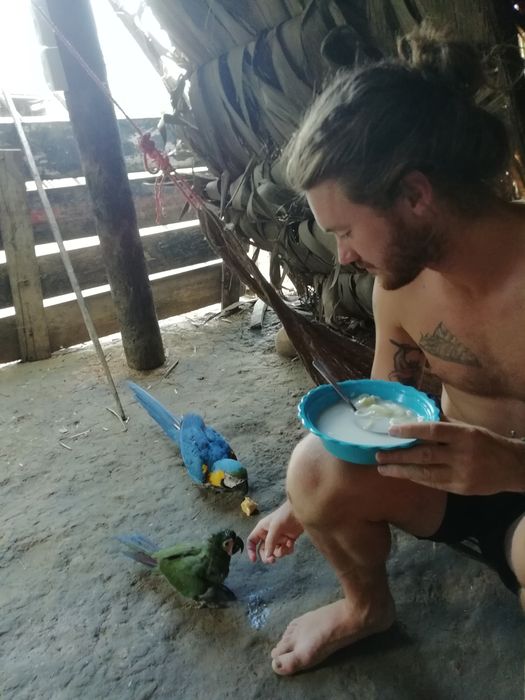
Turtle soup is essentially meat broth with cassava, without salt or any spices. And for the main course, they serve rice with turtle liver. The meat is tender, similar to beef but much softer.
Grilled caiman
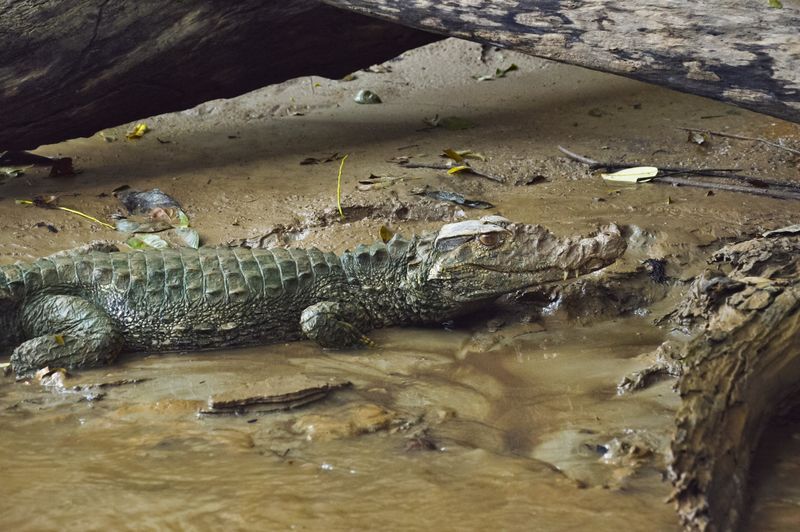
Grilled crocodile is very tasty, somewhat like frog legs, and the thrill of having hunted it adds to the taste. Fried green bananas serve as a side. They’re not sweet and taste like potatoes.
Smoked wild boar
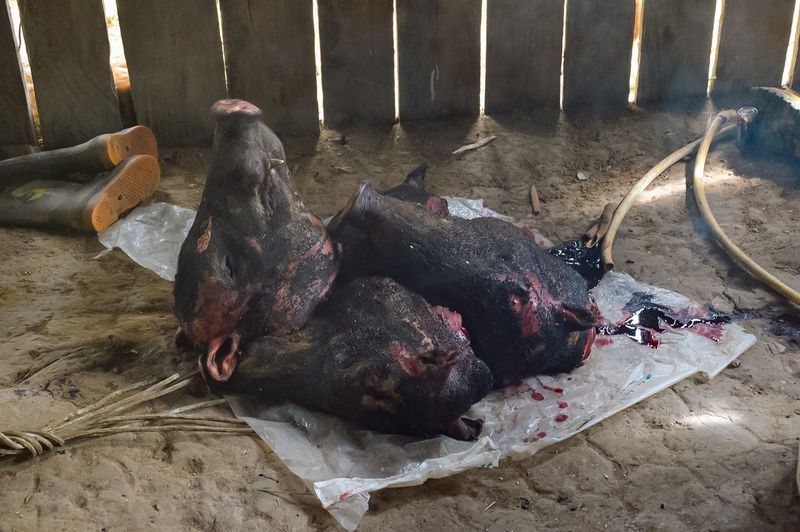
Smoked peccary meat is simply pulled from the carcass – the chicks are the best. It’s hands down the most mouthwatering dish of the Waorani tribe!
River fish
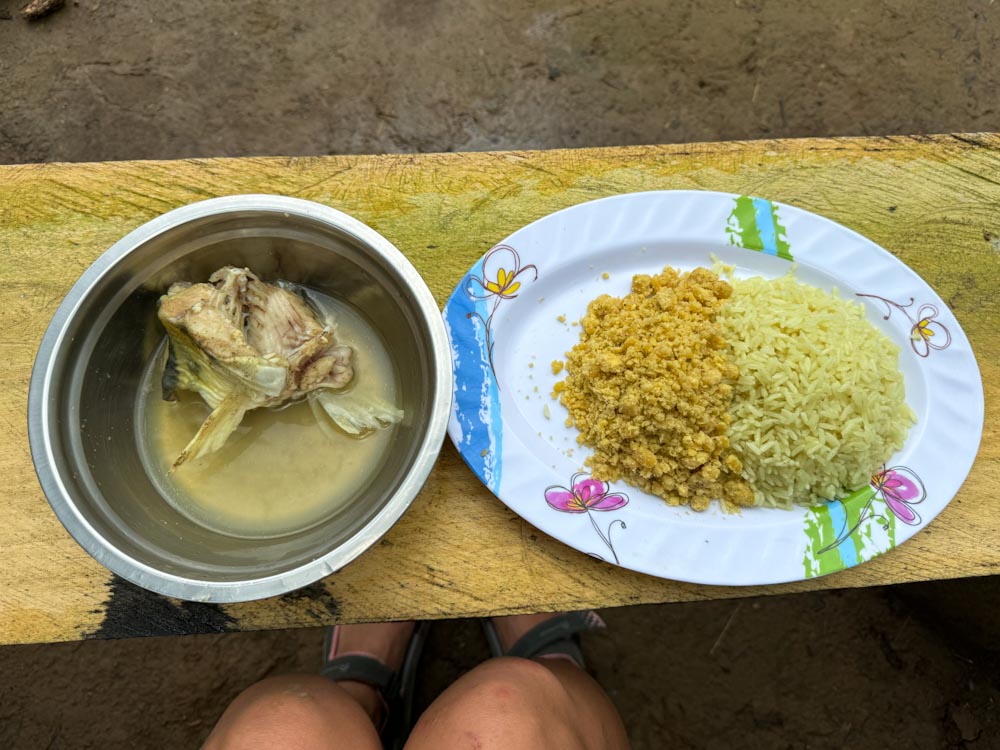
They usually fish catfish and piranhas, but one time, we hit the jackpot with arapaima. The river’s teeming with fish, so it only takes about fifteen minutes for the whole family to reel in a catch. They whip up some delicious broth with wild garlic or just throw fish on the grill.
Grilled monkey
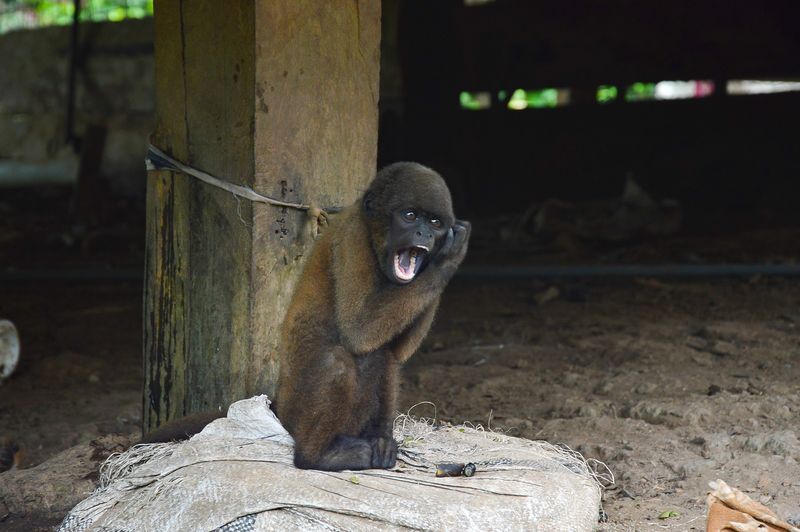
There’s no recipe for cooking monkey. They toss the carcass into the fire with the skin on and wait for the meat to cook. I didn’t get to try this dish myself, but many Indians love it. After all, they wouldn’t hunt monkeys so often if they weren’t tasty!
Chicha drink made of yucca
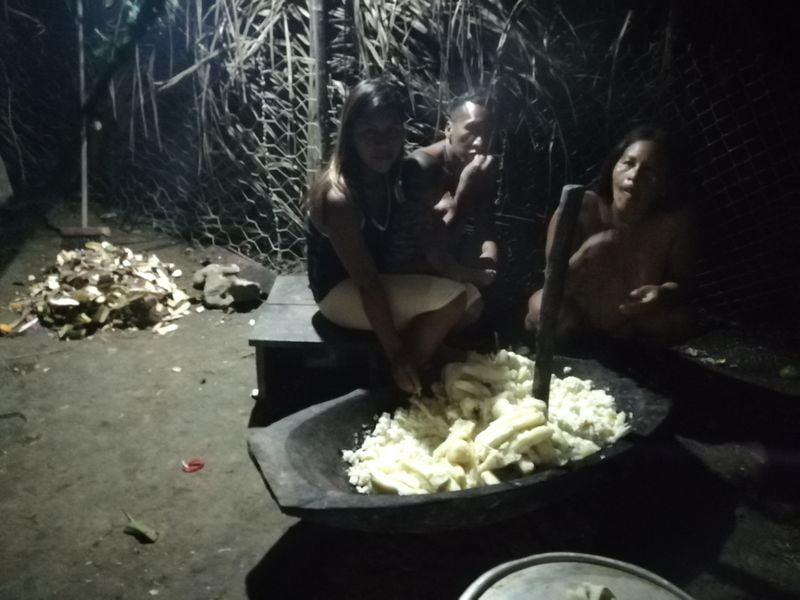
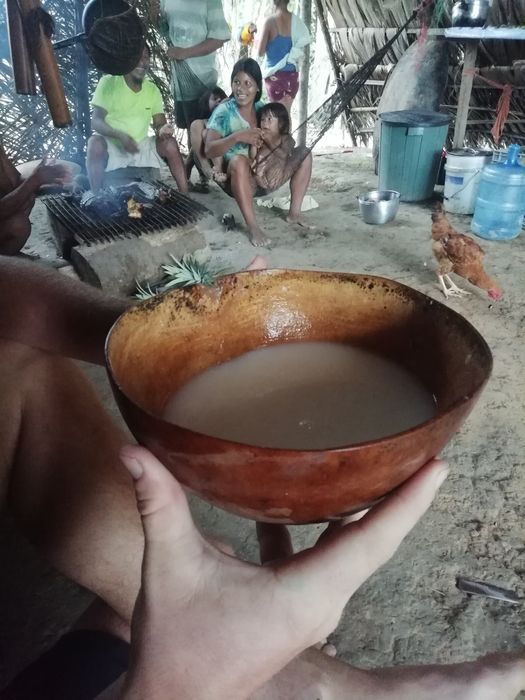
Chicha is made from chewed and fermented cassava. Women crush the roots in a large pot, then chew them for a while and spit them out. Yes, you read that correctly. The mash sits for a couple of days for fermentation, then they dilute it with water and drink it. It’s a filling drink with 2% alcohol.
Suri larvae
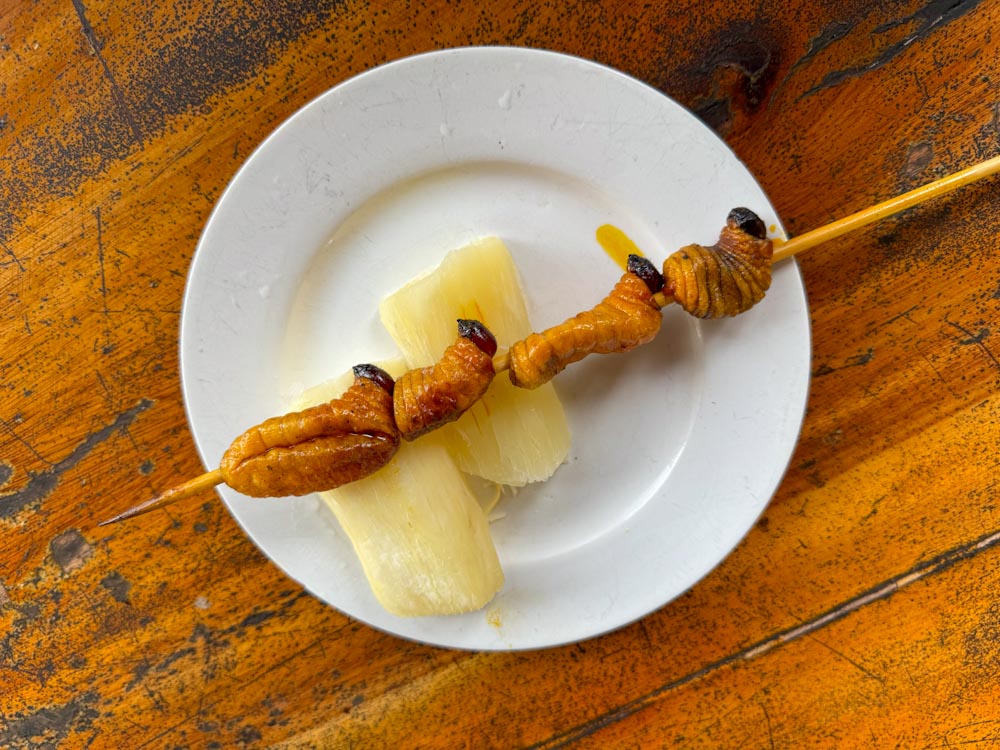
These chubby creatures, roughly the size of a thumb, reside within the core of palm trees. They can be consumed either alive or fried, and I liked the first option more. When fried, they turn into crunchy shells, but when consumed live, they retain some moisture. Anyways, I rather eat fish 🥲.
Chonta drink
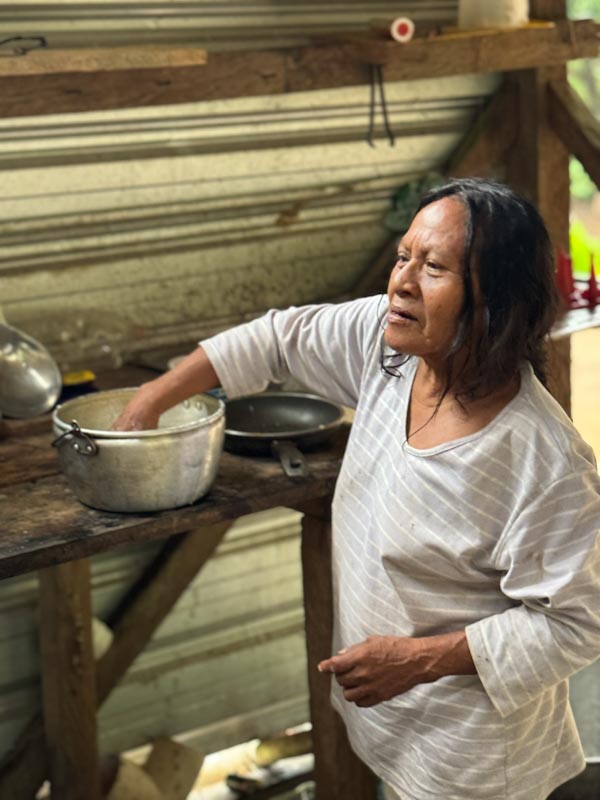
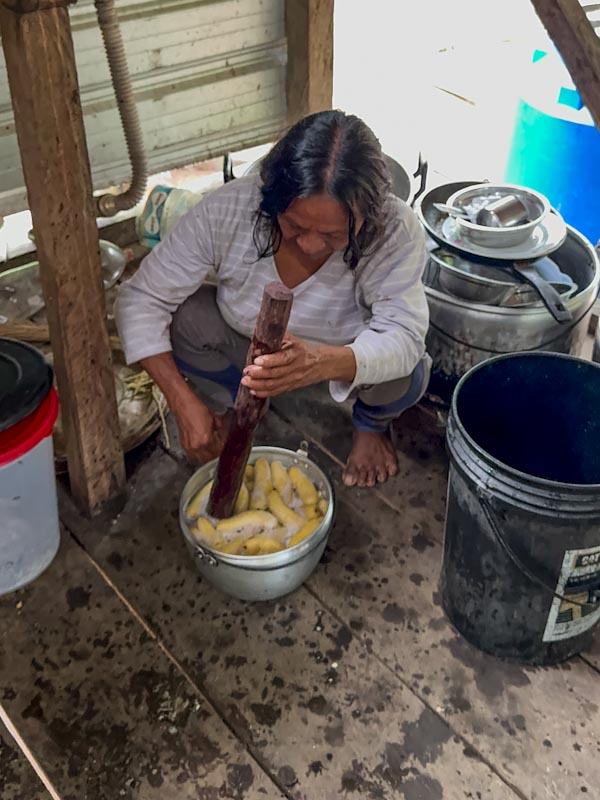
This drink is similar to chicha, but they don’t chew it. They boil plantain bananas together with the fruits of the chonta palm, which are called chontaduro, and mash them into a paste. Before consuming, the mixture is strained through a sieve and diluted with water.



